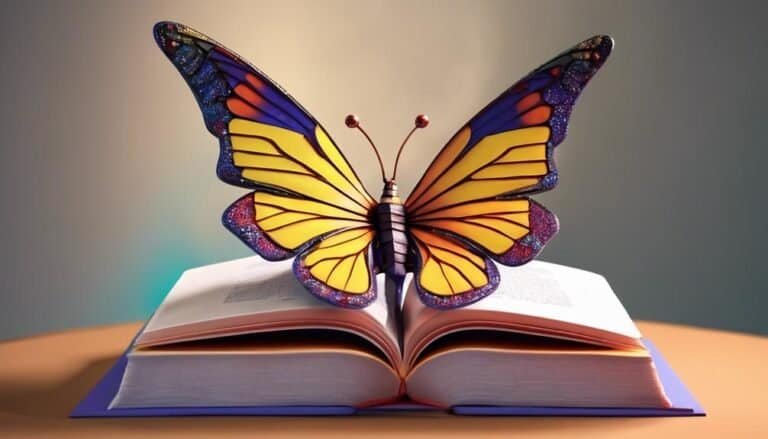Salvador Dalí Personality Type
Salvador Dalí's personality type blends eccentricity, creativity, and surrealist flair. Influenced by master artists, he embraced avant-garde movements, fueling his desire to innovate. His flamboyant conduct extended to everyday life, from quirky habits to unique dressing. Dalí's passion for Surrealism explored subconscious territories, merging dream interpretation with art. His complex relationship with Gala fueled his creativity and left an indelible mark on the art world. Dalí's eccentric style and innovative techniques challenged norms, impacting the Surrealist movement profoundly. Discover more about his intriguing personality and lasting legacy in the art world.
Key Takeaways
- Salvador Dalí exhibited an eccentric and flamboyant personality.
- His quirky habits and behaviors defied societal norms.
- Dalí's eccentricities extended to his art and everyday life.
- Known for falling asleep at odd times to access his subconscious mind.
- His personality type aligns with creative and unconventional traits.
Early Life and Influences
Salvador Dalí's formative years were marked by a unique blend of influences that would shape his artistic vision and eccentric personality. Influential experiences during his early life played a pivotal role in molding the surrealist artist he'd become. Dalí's exposure to the works of great masters like Velázquez and El Greco during his youth in Spain left an indelible mark on his artistic inspirations. These encounters fueled his passion for pushing the boundaries of traditional art and paved the way for his unique style.
Additionally, Dalí's time in Madrid, studying at the Royal Academy of Fine Arts of San Fernando, exposed him to avant-garde movements that challenged conventional artistic norms. This exposure, coupled with his innate creativity, sparked a deep-seated desire to innovate and experiment in his own work. The amalgamation of these diverse influences laid the foundation for Dalí's future eccentricities and contributed significantly to his artistic evolution.
Dalís Eccentric Behaviors
Characterized by flamboyant and outlandish conduct, Dalí's eccentric behaviors captivated and perplexed those around him, adding another layer to his enigmatic persona. His eccentric art wasn't limited to his paintings but extended to his everyday life. Dalí's quirky habits, such as his obsession with ants or his peculiar way of dressing, showcased his unconventional approach to everything he did. One of his most famous eccentric behaviors was his tendency to fall asleep at unusual times and in bizarre places, claiming that it helped him access his subconscious mind for artistic inspiration.
Dalí's eccentricities weren't just for show; they were deeply intertwined with his artistic vision. His eccentric art mirrored his unconventional behaviors, blurring the lines between reality and imagination. By embracing his eccentricities, Dalí challenged societal norms and paved the way for a new wave of avant-garde artists. His willingness to push boundaries and his commitment to his unique style continue to inspire generations of artists to embrace their quirks and let their eccentricities shine through in their work.
Passion for Surrealism
Dalí's eccentric behaviors, intertwined with his artistic vision, laid the foundation for his profound passion for Surrealism. His fascination with the subconscious mind and dream interpretation fueled his exploration of artistic symbolism in ways that were both innovative and controversial. Surrealism, as a movement, provided Dalí with the perfect platform to explore his innermost thoughts and emotions in a way that transcended traditional artistic boundaries.
Through his artworks, Dalí delved into the depths of the human psyche, creating dreamlike landscapes that challenged viewers to question their own perceptions of reality. His use of symbolism, often bizarre and disconcerting, served as a window into his subconscious mind, inviting audiences to interpret the hidden meanings behind his intricate compositions.
Dalí's passion for Surrealism wasn't merely a fleeting interest but a lifelong commitment to pushing the boundaries of conventional art. His ability to merge dream interpretation with artistic symbolism remains a hallmark of his legacy, solidifying his place as one of the most influential Surrealist artists of the 20th century.
Relationship With Gala
In his personal life, the enigmatic artist maintained a complex and tumultuous relationship with Gala, a figure who profoundly influenced both his art and his psyche. Their love story was one of passion, turbulence, and artistic collaboration. Gala served as Dalí's artistic muse, inspiring some of his most iconic works. She wasn't only his wife but also his manager and muse, playing a pivotal role in his artistic endeavors.
Their relationship was characterized by intense emotions and a deep connection that transcended the conventional boundaries of love and partnership. Gala's influence on Dalí's art can't be overstated, as she fueled his creativity and pushed him to explore new artistic horizons. Despite the challenges they faced, their bond remained strong, and their partnership left an indelible mark on the art world.
The dynamic between Dalí and Gala exemplifies the complexities of love, art, and personal relationships, showcasing how intertwined these aspects can become in the life of a passionate artist.
Legacy and Impact
The lasting legacy and profound impact of Salvador Dalí reverberate through the art world, shaping perceptions and inspiring creativity to this day. Dalí's influence on art is undeniable, as his unique blend of surrealism and symbolism continues to captivate audiences and influence contemporary artists. His eccentric style and innovative techniques challenged traditional norms, pushing boundaries and expanding the possibilities of artistic expression.
Dalí's lasting legacy can be seen in the way he transformed the art world, introducing new ways of exploring the subconscious mind and dreams through his works. His impact on the Surrealist movement, in particular, has been profound, with many artists drawing inspiration from his unconventional approach to art. Dalí's ability to evoke emotion and provoke thought through his intricate and thought-provoking imagery has left an indelible mark on the art world.
Conclusion
To sum up, Salvador Dalí's personality type can be described as eccentric, passionate, and visionary. His unique approach to art and life continues to inspire and influence artists and individuals around the world.
For example, a young artist struggling with conformity and self-expression may find solace in Dalí's unapologetic embrace of surrealism and individuality, encouraging them to embrace their own creativity and uniqueness.
Dalí's legacy will forever leave a mark on the world of art and beyond.








